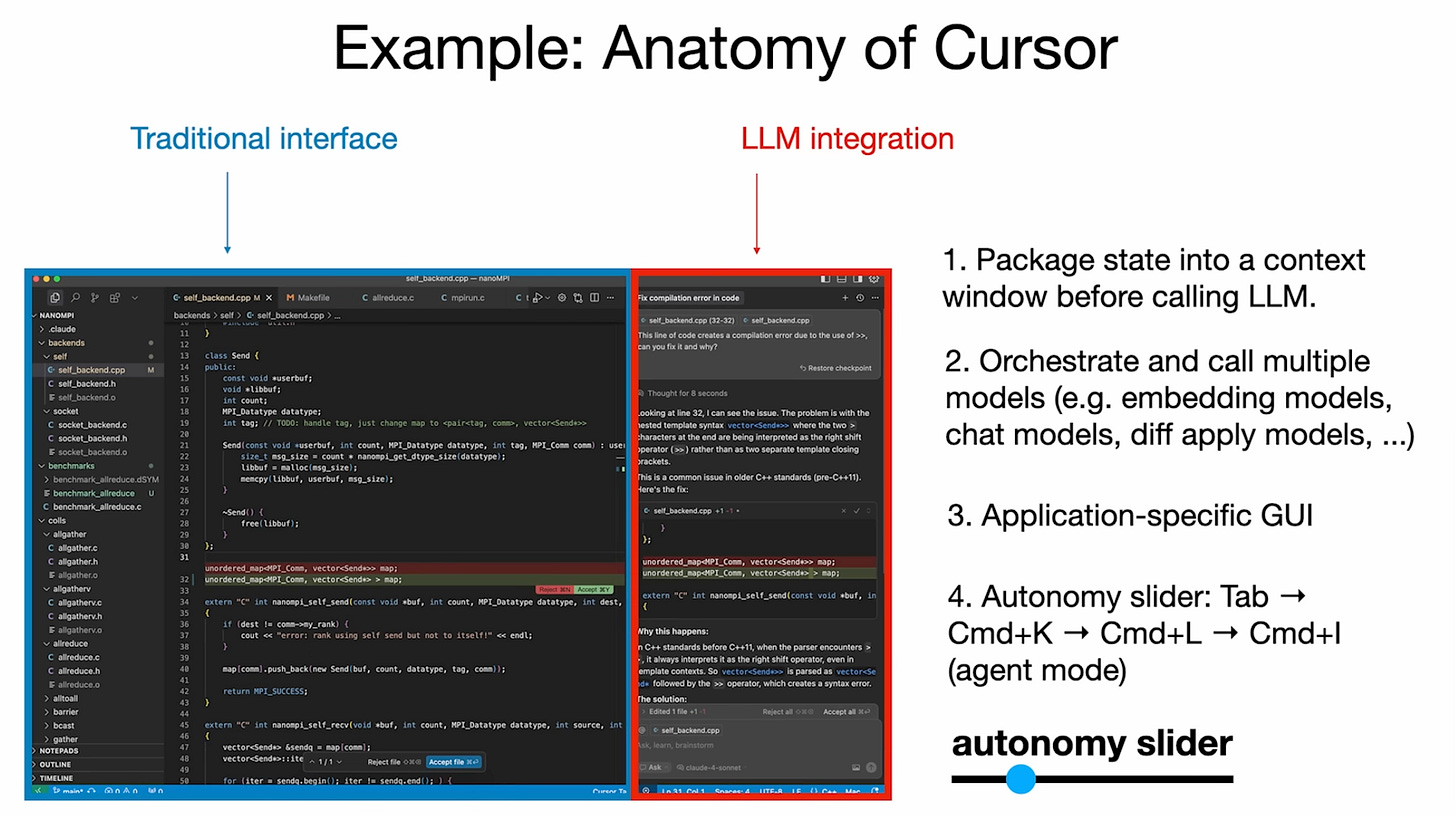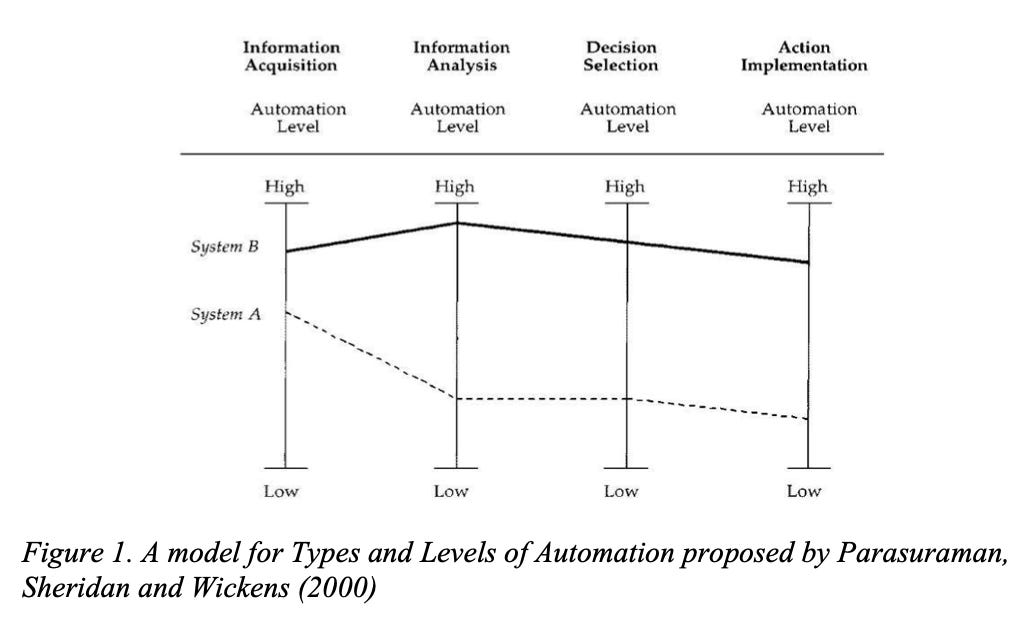Table of contents
• What is an Autonomy Slider?
• Examples in products today
• Why does it work so well?
• Historical context
• Ideas to apply Autonomy Sliders today
What is an Autonomy Slider?
It’s a term coined by Andrej Karpathy in June 2025 that describes a UI pattern which allows the user to set the level of autonomy the AI has within a given tool or product. I’ll propose a more formal definition here:
Autonomy Slider (n.) — a design pattern that allows individuals to adjust the degree of autonomous decision-making and action-taking granted to an AI system, typically along a continuous or discrete spectrum ranging from human-directed to fully autonomous operation.
Key properties:
Continuous spectrum (not a binary on/off).
User or context driven: the level can change during a workflow.
Trust building: start low‑risk, earn confidence, ascend.
Graceful fallback: always allow a retreat down the slider when the model’s limits appear.
Examples in products today
Autonomy Sliders are found in quite a few popular products today. Here’s a few examples.
Cursor IDE
Cursor allows the user to choose between tab to complete, AI edit in line, AI chat code generation, and agent mode. Each level increases in autonomy. In agent mode, for example, the AI has sufficient autonomy to edit multiple files at once and display a diff when done.
Perplexity
In Perplexity you can choose between search, research, and deep research. Each increases the level of autonomy given to the AI system performing the query on your behalf. The search function gathers multiple sources and summarizes a response. The research function performs multiple searches, with one or two reasoning cycles in the flow. The deep research function performs many searches and many reasoning cycles, generating very in-depth response.
Why does it work so well?
The Autonomy Slider design pattern is so successful because it leans on a couple principles that are really important in AI products.
Trust calibration - the slider lets the user constrain the level of AI autonomy by how much trust they have in the AI to perform well. As the user works with the AI longer, levels of trust tend to evolve, so the slider provides that flexibility.
Risk matching - some tasks may have higher risk, which may come with a preference for lower levels of AI autonomy. While other tasks have little risk and high autonomy is fine. The slider allows the user to easily switch modes to accommodate for changing levels of risk.
Historical context
As my friend, Miles, often says “good ideas repeat themselves.” And, perhaps unsurprisingly, the Autonomy Slider is not a new idea. In 1978 Sheridan & Verplanck proposed 10 levels of automation in decision making and action taking:
And then in in 2000 Parasuraman, Sheridan, and Wickens built on this idea by representing automation levels within four functions of information processing: 1) information acquisition, 2) information analysis, 3) decision and action selection, and 4) action implementation.
And around the same time, in 1999 Endsley and Kaber expanded on the 10 levels of automation by breaking out tasks and assigning ownership across tasks to either human or machine.
Ideas to apply Autonomy Sliders today
Most products don’t feature the Autonomy Slider design pattern. But many should, and most products being built today probably will. Here’s a short list of ideas to act as a springboard for you and your team:
Customer‑support suites: canned answer pick‑list → suggested multi‑step workflows → end‑to‑end ticket resolution with escalation thresholds.
Game‑level editors: object placement hints → auto‑populate scenery → full procedural world‑building that designers tweak.
Legal contract review: highlight risky clauses → propose edits → auto‑negotiate templated terms with low‑risk counterparties.
Personal finance apps: categorize spend → recommend budget → auto‑execute bill payments & investments under guardrails.
Music production DAWs: suggest chord → auto‑arrange section → produce full mix; slider lets artists preserve creative control.
You might be interested
I hope this helps! Definitely let me know if you have any questions or comments. If you’ve made it this far, here’s a few things you might be interested in:
I periodically hold workshops focused on building with AI. Get notified when I have the next workshop.
I offer 1:1 paid coaching and consultations. Email me directly to inquire at andrew@distll.ai
Where to find me
Substack - bimonthly long-forms, building in public
YouTube - tutorials, thoughts, building in public
TikTok - quick takes, building in public







